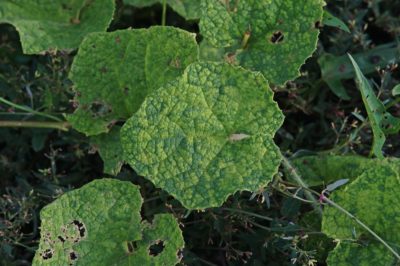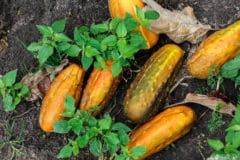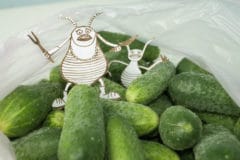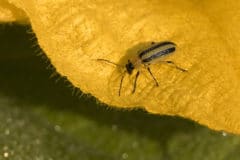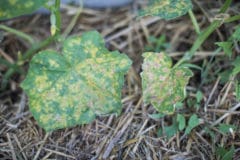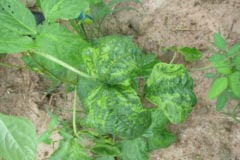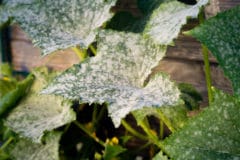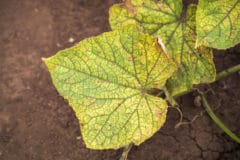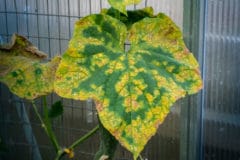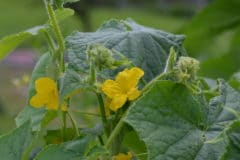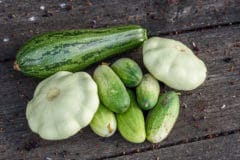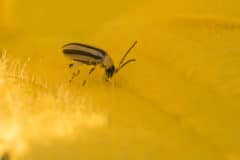How CMV Starts
Plants contract cucumber mosaic virus when they are infested by aphids. These tiny insects colonize a wide range of plants besides cucumbers. They feed by inserting their hollow mouthparts into the stems or leaves and draining sap. CMV-carrying aphids immediately infect their hosts.
How CMV Spreads
AN aphid becomes a cucumber mosaic virus carrier within one minute of feeding on an infected plant. For the next few hours, it’s capable of spreading the infection wherever it feeds. But a bigger problem is that contaminated tools — or even gardeners’ hands — can pass CMV from plant to plant.
Expert gardener’s tip: The only good thing to be said for cucumber mosaic virus is that it only multiplies inside living plant tissue. In other words, you don’t have to worry about it spreading in the soil or from dead plant debris.
Most Susceptible Vegetables
Although Cucumber (Cucurbita) family plants are its primary targets, the mosaic virus poses a real threat to tomatoes, peppers and celery. Its symptoms differ depending on which plant it’s attacking:
- Tomatoes are stunted, with deformed, fernlike leaves. Some strains of the virus can decimate a tomato crop.
- Pepper plants develop severely mottled leaves and deformed, mottled fruit.
- Celery becomes streaked and spotted.
Besides the damage it does to cucumbers’ leaves, the virus produces bumpy, mushy grayish-white fruit that tastes as bad as it looks and feels.
Preventing CMV
Once a cuke plant is infected, your only option is to remove and destroy it. A better approach is to prevent infection. Start by planting CMV-resistant cuke varieties, including:
- ‘Cool Breeze,’ a self-pollinating pickling cuke. It yields produces up to 50 cukes beginning just 45 after germination.
- ‘Marketmore 76,’ a home-garden favorite with 8-to 10-inch fruit great for slicing or pickling.
- ‘Salad Bush,’ perfect for container growing. In just 2 square feet of soil, it produces loads of sweet, tender-crisp 8-inch cukes.
Row Covers
Protect your newly planted cuke seedlings with fabric row covers designed to let moisture, air and sunlight reach the plant while keeping aphids and other pests away. And weed frequently to deprive the pests of alternative hosts.
